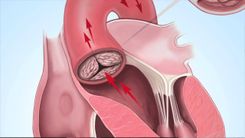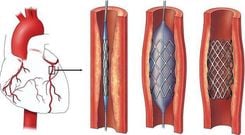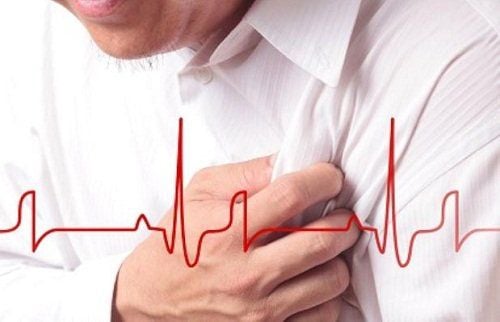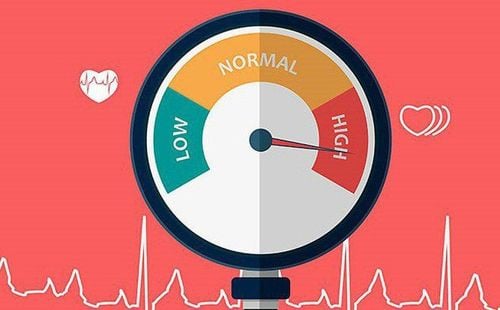This article is professionally consulted by Dr. Bui Tien Dat, MSc, MD - Intensive care and Cardiology Doctor - Intensive care unit - Vinmec Hai Phong International General Hospital.
1. What is a slow heart rate?
Typically, in adults, the sinoatrial (SA) node generates impulses 60-100 times per minute, which determines the normal heart rate range. If the heart rate falls below 60 beats per minute, it is considered bradycardia (slow heart rate).
A slow heart rate may indicate abnormalities in the heart's electrical conduction system, meaning the natural pacemaker of the heart (the SA node) is not functioning properly. Alternatively, some part of the electrical conduction pathways within the heart may be damaged or impaired. In severe cases, the heart beats so slowly that the blood circulation is insufficient to meet the body's needs, leading to dangerous complications that can threaten the patient’s life.
Since a slow heart rate often does not present with clear symptoms, many people are uncertain whether bradycardia is dangerous or how to prevent it. In reality, severe bradycardia that is not promptly diagnosed and treated can lead to serious consequences, such as fainting or seizures.

2. What constitutes low blood pressure?
High or low blood pressure can both be detrimental to human health. Blood pressure instability often causes discomfort and can serve as a precursor to many serious conditions, such as cardiovascular disease or stroke.
Low blood pressure is defined as a systolic blood pressure below 90 mmHg and a diastolic blood pressure below 60 mmHg. Other signs of sudden drops in blood pressure include dizziness, blurred vision, palpitations, rapid heartbeat, impaired cognition, etc. This condition can prevent the brain and other organs from receiving sufficient oxygen and nutrients, potentially causing cerebral hypoxia, brain death, and significant health impacts.
Trắc nghiệm: Huyết áp của bạn có đang thực sự tốt?
Huyết áp cao hay thấp đều ảnh hưởng đến tình trạng sức khỏe con người. Để biết tình trạng huyết áp của bạn có thực sự tốt không, hãy làm bài trắc nghiệm sau đây để đánh giá.3. Dangerous complications of slow heart rate and low blood pressure
Nowadays, due to stress in life, work and study, environmental pollution, and changing dietary and lifestyle habits, low blood pressure is becoming more common, even among adolescents.
Many patients believe that only a fast heart rate (tachycardia) leads to blood pressure issues because it is often a symptom of serious conditions such as high blood pressure(hypertension), heart attack, stroke, or brain infarction. However, a slow heart rate often presents fewer warning symptoms, leading many to underestimate its dangers. In reality, bradycardia is a "silent killer" that can strike suddenly, leaving patients unable to respond in time.

Low blood pressure and bradycardia are closely interconnected. Patients diagnosed with both conditions may face life-threatening complications because the heart’s inability to pump blood and oxygen effectively leads to slower blood flow to the brain.
One common complication among patients who have both low heartbeat and low blood pressure condition is sudden fainting. If not promptly addressed, patients may develop heart failure due to the heart's reduced pumping ability, causing sudden cardiac arrest, heart attack, or even death.
4. How to treat low blood pressure and slow heart rate
The root causes of low blood pressure and slow heart rate often lie in poor diet and lifestyle habits. To maintain health and minimize complications from these conditions, the first step is to adjust one’s diet. Avoid alcohol, such as beer and wine, and include nutritious foods in daily meals. Drink plenty of water, eat fresh fruits, and reduce intake of fatty foods and cholesterol-rich items. In addition to dietary changes, it is essential to maintain a regular exercise regimen. Choose a favorite sport or physical activity that is appropriate for your physical condition and practice it daily. This not only prevents disease and boosts immunity but also helps mitigate issues related to low blood pressure and bradycardia.

Low blood pressure and bradycardia are closely interconnected. Therefore, for patients undergoing treatment as prescribed by doctors, it is crucial to follow medical advice, attend regular check-ups, and make necessary lifestyle adjustments to preserve health effectively.
To arrange an appointment, please call HOTLINE or make your reservation directly HERE. You may also download the MyVinmec app to schedule appointments faster and manage your reservations more conveniently.














